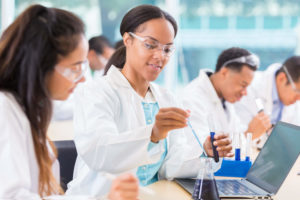Science Lab Safety
Arson is the leading cause of school fires, but a close second is the improper storage of flammable liquids or objects. When a chemistry demonstration went awry at a high school in New York this past January, two students were engulfed in flames. This incident underscores the importance of following proper storage and safety procedures in the classroom. (Read about it in the New York Times article: 8 Violations for School in Wake of Lab Fire.)

The American Chemical Society has produced a series of guides for elementary schools, middle school and high school science teachers:
Chemical Safety in the Elementary School Classroom Chemical Safety for Middle School Teachers Chemical Safety Procedures for High SchoolIn addition, the U.S. Chemical Safety Board (CSB) released, “After the Rainbow,” a video safety message focused on potential dangers in high school chemistry laboratories. The message features Calais Weber, an accident survivor, who on January 23, 2006, at age 15 was burned over 40 percent of her body during a chemistry demonstration performed by her teacher at a prestigious boarding school she attended in Ohio. See the video here.
Handling Chemicals
The American Chemical Society offers the following guidelines for elementary school teachers:
Most K–6 science activity procedures call for household chemicals. Before using these, study the product label carefully to learn the hazards and warnings.
When using a chemical purchased from a science supply company that serves K–12 schools, check the Material Safety Data Sheet (MSDS). This document describes the hazards of using the chemical, along with proper storage and disposal information.
Always store chemicals and solutions in properly labeled containers meant for holding chemicals and solutions. Never store chemicals in containers that were originally used for food.
Be sure to dispose of chemicals properly. If you have any questions about how to do this, consult the MSDS or your science supervisor. Regulations vary, so it is best to contact local experts.
Keep the MSDS handy when using a chemical. If a student is injured as a result of coming into contact with the chemical, the MSDS will explain what to do. Be sure to send the injured student to the nurse’s office along with the MSDS. Every MSDS should be on file in the school district office, as well as in the school or science department office. Copies should be available for the classroom.
Always wear cotton or insulated gloves, such as gardening or work gloves, when handling dry ice. This solid carbon dioxide is extremely cold and can damage bare skin.
Store dry ice in a container, such as an open cooler or cardboard box, so that carbon dioxide gas can escape. If placed in a sealed container the gas pressure will build and may cause the container to explode.
Heating Materials
The area surrounding a heat source should be clean and have no combustible materials nearby.
Students should not work with hot materials, such as very hot water. Common household liquids, such as alcohol or oil, are flammable and should not be heated. Heat only water or water solutions.
Not all glass can handle the stress of being heated. Do not use household glass. Use only borosilicate laboratory glassware when heating substances.
Never use alcohol burners. Handle all hot materials using the appropriate type of tongs.
Storing Chemicals
To prevent classroom catastrophes, store chemicals inside a closeable cabinet or on a sturdy shelf with a front-edge lip to prevent accidents and chemical spills. Always arrange the storage of chemicals according to compatibility and store alphabetically within compatible groups. Order and store the minimum supply necessary.
Volatile and odoriferous chemicals should be stored in a ventilated cabinet. Survey chemicals annually and discard any which are obsolete or show signs of decomposition.
Classroom Personal Protective Equipment
Personal Protective Equipment (PPE) is any clothing/equipment used to protect the head, torso, arms, hands and feet from exposure to chemical, physical, or thermal hazards. Faculty and students who are required to wear PPE must be trained in the use and care of that equipment and should be able to demonstrate an understanding of the training received. It is important that all PPE be kept clean and properly maintained. Teach students how to inspect PPE for wear and tear before using.
The American Chemical Society recommends the following regarding PPE:
- Be sure students wear properly-fitting splash-proof safety goggles when working with, or observing others working with, chemicals, hot liquids, or flying objects.
- Wear a laboratory apron or art smock made of cotton, if there is a chance of soiling or damaging clothing.
- Use gloves, heat or cold-resistant mitts, or other hand protection when working with hot materials, dry ice, noxious plants, or live animals.
- Tie back long hair and secure loose clothing and dangling jewelry, especially when working with chemicals or heat sources.
- Remind students to keep science materials away from their mouths, noses, or eyes when conducting or cleaning after an activity or experiment.

